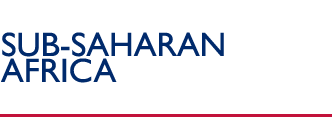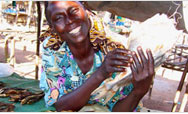Uganda
 USAID Programs in Uganda: A Photo Essay USAID Programs in Uganda: A Photo Essay
The photos presented here offer insights into life in Uganda and show how USAID programs address the problems and needs of real people. [ to the photo essay ]
USAID's Strategy in Uganda
It has been nearly two decades since Uganda began the long road
to recovery following many years of economic chaos and civil
unrest. While strong growth caused poverty to decline steadily
in the 1990s, the benefits of that growth were not equitably
distributed across the population, with troubling regional disparities,
especially for Ugandans in the north of the country, which has
been plagued by conflict for nearly 20 years. The United States
has security and humanitarian interests in helping Uganda tackle
its economic and social problems because stable political and
economic conditions in the country will encourage regional stability
in East Africa. USAID supports Uganda’s efforts towards
a stronger democracy free of conflict, sustainable rural economic
growth, and a healthier, more educated population.
STRENGTHENING DEMOCRACY AND GOVERNANCE
Uganda faces real challenges both in addressing corruption
and weaknesses in its democratic processes and in reaching a
peaceful resolution to a conflict tin the north of the country
that has displaced 1.4 million people. USAID aims to improve
legislative oversight, increase political pluralism, enhance
decentralized governance, and enable greater participation of
an informed civil society in processes of governance at both
the national and local levels. The program also seeks to reduce
the incidence and impact of conflict in northern Uganda by promoting
peace talks, reconciliation and reintegration, community dialogues,
and support for orphans, vulnerable children, and victims of
torture.
SUPPORTING SUSTAINABLE RURAL ECONOMIC GROWTH
Nine million Ugandans live on less than $1 a day, and most
of these belong to households depending on subsistence agriculture.
USAID assistance seeks to increase and diversify commercial
agricultural production and increase Uganda’s competitiveness
in local and international markets. This will be accomplished
by improving agricultural productivity and strengthening producer
organizations, increasing access to credit and savings services
for rural people, and ensuring greater food security. By increasing
the production and marketing of food and cash crops, such as
coffee, vanilla, and dairy products, rural incomes will rise.
USAID works to identify threats to the biodiversity in Uganda’s
section of the Albertine Rift by working with local communities.
USAID promotes income-generating activities involving the sustainable
use of natural resources, including tourism, agriculture, and
forestry related enterprises. The program also seeks to reduce
conflicts between communities and protected areas by promoting
access rights, revenue sharing, and control of problem animals.
ENCOURAGING A MORE EDUCATED AND HEALTHIER POPULATION
Since the launch of universal primary education in 1997, primary
school enrollment has nearly tripled. However, improving the
quality of education continues to be a challenge, as does the
fact that delivery of education services in the war-torn northern
districts has been significantly disrupted. USAID aims to improve
the quality of basic education through technical, financial,
and materials support to teacher training, strengthening school
management, and increasing parental and community involvement.
Uganda is also plagued by health problems including high rates
of malaria, HIV/AIDS, tuberculosis, malnutrition, infant mortality,
and maternal mortality. The health concerns are multiplied in
the north because of conflict, including a higher HIV prevalence
rate (9.1 percent) than other rural areas (6.4 percent) and
nearly matching the average rates in urban areas (10.4 percent).
USAID trains community outreach workers in treatment of tuberculosis
and malaria, supports immunizations against childhood diseases,
provides insecticide treated bed nets, and improves the quality
of and access to family planning services. In 2004, treatment
of young children with malaria within 24 hours greatly increased
in targeted districts, resulting in a reduction by over 50 percent
of severe anemia caused by malaria.
Uganda is a focus country for the President’s Emergency
Plan for AIDS Relief. Through the Emergency Plan, USAID collaborates
with government, religious, and community-based institutions
to deliver comprehensive prevention, care, and treatment services.
PROVIDING HUMANITARIAN ASSISTANCE
In 2004, USAID provided $56 million of emergency food and $9
million of emergency nonfood assistance, mainly for the conflict-affected
northern Ugandans. These programs continue in 2005, providing
health and nutrition services and water and sanitation improvements,
as well as staple foods such as maize and vegetable oil.
Back to Top ^
|


